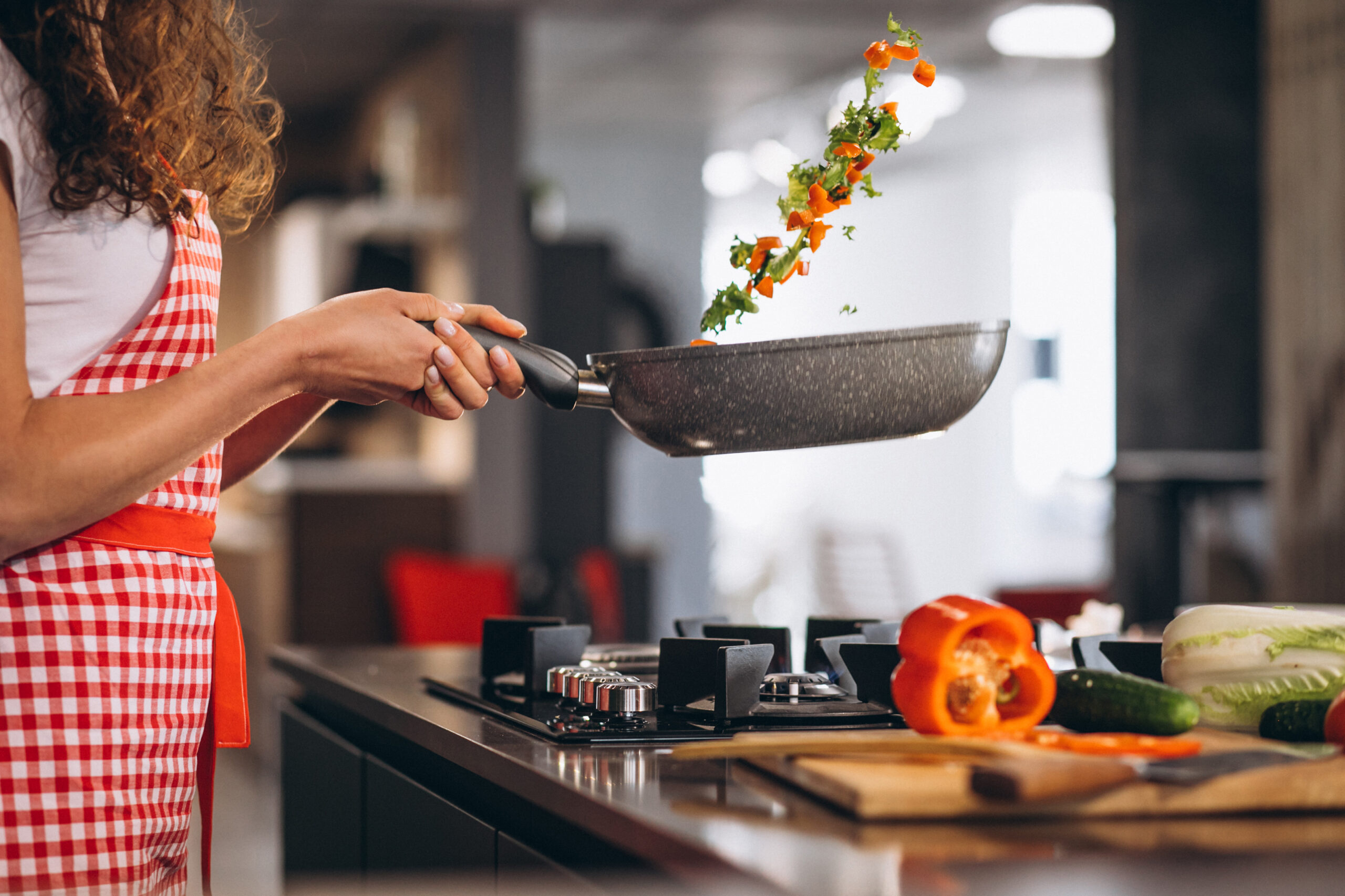Cooking plays an integral role in our day-to-day existence, nourishing both our bodies and souls. Yet, amidst the delicious aromas and mouthwatering flavors, we must be keenly aware of the potential safety hazards that lurk in the kitchen. Consequently, whether you boast a culinary mastery or merely dabble in the culinary arts, it is paramount to master the art of cooking safely with these insider tips to safeguard against accidents, injuries, and devastating fires. In this all-encompassing compendium, we embark on a journey through an extensive array of cooking safety tips, delving into the realms of food preparation, as well as safe practices when utilizing stoves and ovens.
Food Preparation Safety
- Hand Washing: Always start with clean hands. Wash your hands thoroughly with soap and water before handling food to prevent the spread of bacteria.
- Proper Thawing: When defrosting frozen foods, use the refrigerator, cold water, or the microwave. Avoid leaving food out at room temperature, as it can promote bacterial growth.
- Cross-Contamination: Use separate cutting boards and utensils for raw meats and vegetables to avoid cross-contamination. Clean and sanitize these items after use.
- Safe Food Storage: Refrigerate perishable foods promptly and store them at the correct temperature to prevent spoilage and foodborne illnesses.
Stovetop Safety
- Clear the Area: Ensure there are no flammable materials, such as kitchen towels or curtains, near the stove. Keep a clear workspace to master the art of cooking safely with these insider tips from occurring.
- Pot and Pan Handles: Turn pot and pan handles inward to avoid accidentally knocking them over or spilling hot contents.
- Stay in the Kitchen: Never leave the stove unattended while cooking. If you need to step away, turn off the burner.
- Grease Fires: In case of a grease fire, never use water to extinguish it. Instead, cover the pan with a lid or use a fire extinguisher. Have a kitchen fire extinguisher within easy reach.
- Roll Up Sleeves and Use Oven Mitts: Loose clothing or long sleeves can catch fire. Use oven mitts or potholders when handling hot cookware.
Oven Safety
- Preheating: Preheat the oven before placing food inside. This ensures even cooking and prevents prolonged exposure to a high temperature.
- Oven Mitts and Timer: Always use oven mitts when handling hot dishes, and set a timer to remind you when your food is done. This prevents burns and overcooking.
- Proper Cookware: Ensure the cookware you use is oven-safe. Not all pots and pans can withstand high oven temperatures.
- Ventilation: Use the oven’s ventilation system or open a window when baking or roasting to prevent the buildup of smoke and odors.
Natural Ways to Sculpt and Get a Flat Tummy
Hidden Dangers Lurking in Your Favorite Desserts
Microwave Safety
- Microwave-Safe Containers: Only use microwave-safe containers and utensils. Avoid using metal or aluminum foil in the microwave, as it can cause sparks and fires.
- Stirring and Testing: When reheating liquids or foods in the microwave, stir them well and test the temperature before consuming to avoid burns.
- Steam Release: Be cautious when opening containers or covering in the microwave. Steam can build up and cause burns.
Electrical Appliances Safety
- Inspect Cords and Plugs: Regularly check the cords and plugs of kitchen appliances for damage. Do not use them if they are frayed or show signs of wear.
- Unplug When Not in Use: When not in use, unplug small appliances like toasters, coffee makers, and blenders to reduce the risk of electrical fires.
- Keep Appliances Dry: Ensure that your hands are dry when plugging in or unplugging electrical appliances. Keep them away from water sources.
General Cooking Safety
- Children and Pets: Keep children and pets away from the cooking area to prevent accidents and burns. Use safety gates if necessary.
- Read Labels: Pay attention to food packaging labels for cooking instructions and safety precautions.
- Smoking and Alcohol: Avoid cooking under the influence of alcohol or while smoking. Impaired judgment can lead to accidents.
- Emergency Response: Familiarize yourself with basic first aid and how to respond to common kitchen injuries like burns and cuts.
- Fire Extinguisher: Have a working fire extinguisher in the kitchen, and make sure you know how to use it.
Fire Safety
- Smoke Alarms: Ensure that smoke alarms are installed in the kitchen and other relevant areas of your home. Test them regularly.
- Fire Escape Plan: Develop a fire escape plan for your home and practice it with your family. Know the exits and escape routes.
- Grease Buildup: Regularly clean the stove, oven, and exhaust hood to remove grease buildup, which can be a fire hazard.
Conclusion
Kitchen safety is absolutely essential to avoid any mishaps, injuries, and God forbid, fires in your very own culinary haven. Regardless of whether you’re whipping up a quick and easy dish or trying your hand at elaborate culinary creations, it is imperative that you pay heed to these master the art of cooking safely with these insider tips. By exercising mindfulness during food preparation, handling stovetops and ovens with utmost caution, and consistently following general kitchen safety practices, you can relish the joys of cooking without compromising the safety of yourself and your loved ones. Always remember, a few moments of vigilance can spare you a lifetime of remorse.
Share this content:


[…] Master the Art of Cooking Safely with These Insider Tips […]